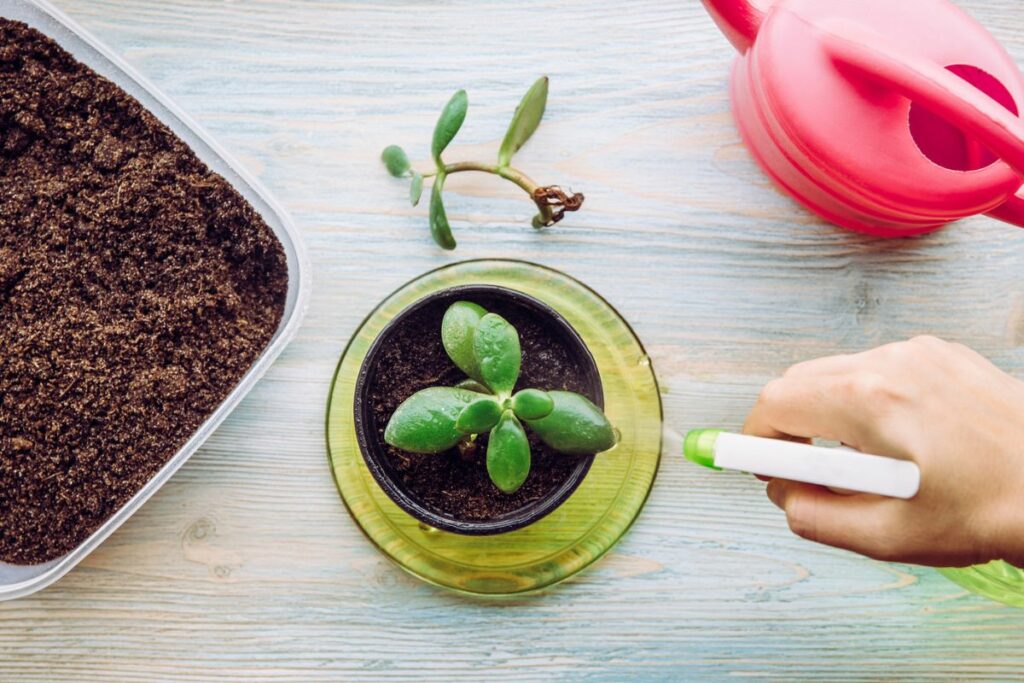When you bring a jade plant into your home, you enter a world of lush succulents that promise to be low-maintenance companions. However, caring for these resilient plants might not be as straightforward as one might think. Many enthusiasts learn the hard way that common care tips found online can sometimes lead to lackluster results – a jade plant with drooping leaves and unsightly gaps is often the outcome of well-meant, but misguided advice.
Gaining insights from experienced cultivators can transform your approach to nurturing your jade plant. Richard, a seasoned plant expert from Sheffield Made Plants, highlights that even the greenest thumbs can encounter growing pains. He shares his expertise to steer you clear of habitual errors and arms you with practical strategies to ensure your jade plants thrive. By adopting these proven tips, you’ll be equipped to create the ideal environment for your succulent to flourish.
1. Watering Jades

Jade plants thrive with adequate water, contrary to the popular notion that they can be left for numerous weeks without hydration. Overlooking their need for moisture can lead to the plant’s deterioration.
Water Requirements:
- Monitor Moisture: Only water when the soil is dry to the touch.
- Avoid Schedules: Steer clear of rigid watering timetables.
- Use Tools: Consider a moisture meter for accurate soil moisture readings.
- Summer vs. Winter: Generally, water bi-weekly in summer and every 3 to 4 weeks during winter, adjusting for climate variations.
Tips for Proper Watering:
- Check the soil before watering – if it’s dry, thoroughly soak the plant.
- Shun watering when the soil still has moisture to prevent over-saturated leaves and stems.
- Employ a moisture meter to take the guesswork out of the equation.
- If the meter reading is in the dry zone, your jade is ready for a drink.
- Ignoring the jade’s need for water may result in wrinkled leaves.
- Adapt your watering frequency to the climate you live in; more arid regions necessitate more frequent irrigation.
Watering judiciously ensures a healthy and vibrant jade plant. Being attentive to their moisture needs helps prevent both under and overwatering, which are the principal causes of plant stress.
2. Jades and Sunlight
Jade plants thrive in environments abundant in light. Positioning them near windows that face east or west is highly beneficial. Supplementary lighting, such as south-facing windows, can also be advantageous.
When lavished with sunlight, jade plants often exhibit a purplish hue along their leaves, thanks to a pigment known as anthocyanin. If you notice intensified red or violet across the entire leaf, it may signal excessive light. To correct this, simply move the plant further from the light source.
Monitoring leaf spacing can indicate whether your jade receives adequate light. Etiolation, characterized by stretched plants with elongated gaps between the leaves, signifies insufficient light. Compact growth, with minimal spacing between leaves, indicates that your plant’s lighting conditions are just right.
For those with limited natural light, artificial plant lighting is an effective substitute. It’s crucial, however, to maintain a safe distance between the lights and the plant to prevent leaf burn.
3. Pruning Jades

Jade plants exhibit robust regenerative abilities when pruned, sprouting multiple new branches from the site of the cut. This trait enables gardeners to encourage a fuller, bushier growth by strategically trimming the plant. Not only does this process result in an aesthetically pleasing shape, but it also promotes the overall health of the plant.
When pruning your jade, focus on these simple guidelines:
- Select for Shape: Trim branches that stretch beyond the pot’s edge to maintain a compact form.
- Prune for Propagation: Cut where you desire more growth; this will encourage branching at that point.
- Simplify Your Approach: Shorten elongated stems to let the plant naturally adjust and grow more evenly.
- Growth Direction: Understand that jade plants will extend toward the leaf base just above each cut you make.
Remember, the goal is to help your jade plant develop a lush, balanced look without overthinking the process. Pruning is not just a maintenance task but also a gateway to propagating new jade plants from the severed limbs.
4. Growing Jades from Stems or Leaves
To multiply your collection of jade plants, begin by selecting healthy stems or leaves from your pruning sessions. New growth can be encouraged by following these simple steps:
Stem Cuttings:
- Trim a stem section.
- Remove any lower leaves.
- Plant directly into a well-draining soil mix.
Leaf Cuttings:
- Gently twist a leaf from the stem.
- Let it callous over for a few days.
- Place the leaf on top of the soil.
After planting, water the cuttings and place them in an area with ample indirect sunlight. It’s worth noting that while stem cuttings quickly grow into new plants, leaf cuttings may take considerably longer to develop and have a lower likelihood of success. However, both methods can effectively yield new jade plants with a bit of patience and care.

